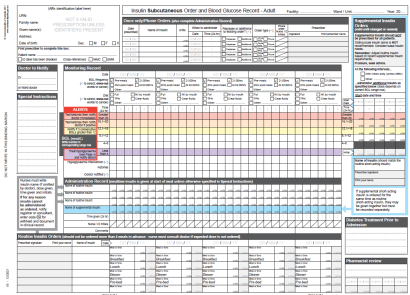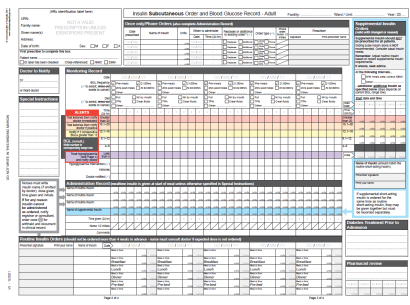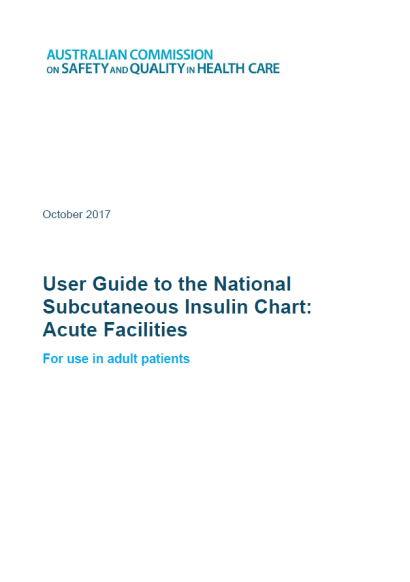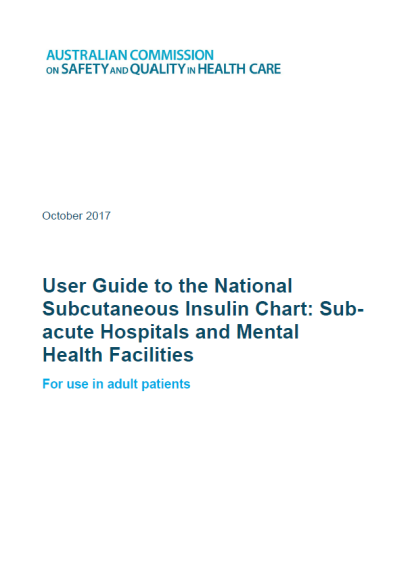National subcutaneous insulin medication charts
The Commission has produced national subcutaneous insulin medication charts for acute and non-acute hospitals and mental health facilities. These support the delivery of appropriate care and improve the management of blood glucose levels (BGLs) in these different groups of patients.
Design features
The charts are designed to:
- Link the prescribing of subcutaneous insulin with administration and recorded blood glucose levels (BGLs)
- Provide forcing functions to reduce the use of non-standard abbreviations and non-standard dosing regimens
- Provide guidelines for action to be taken in the event of BGLs reaching levels which indicate a medical officer should be alerted and action taken
- Prompt daily review and adjustment of insulin doses in response to BGLs.
Safety features and enabling functions
These include:
- Notification prompts for BGLs outside of target range
- UNITS pre-printed
- Discouragement of stand-alone subcutaneous ‘sliding scale’ insulin
- Ability to prescribe supplemental (or correctional) insulin
- Multidisciplinary communication documentation
- Recommended initial insulin infusion rates
- Guidelines for the management of hypoglycaemia and hyperglycaemia (available in two chart variations to suit acute hospital settings)
- Insulin administration associated with meals by pre-printing meal times.
Safety performance
The national subcutaneous insulin medication chart was piloted in public and private hospitals in two phases. The safety performance of the subcutaneous insulin medication chart pointed to 35 areas of positive performance (of statistical significance), which led to improved management of BGLs in hospitalised patients.
The chart is based on the best evidence available at the time of development, and included human factor analysis and piloting results. Healthcare professionals are advised to use clinical discretion and consideration of the circumstances of the individual patient when using the chart to manage BGLs.
Charts and resources
For acute hospitals
For non-acute hospitals and mental health facilities
Support materials
The following support materials have been developed by the Commission and the University of Queensland to help hospitals and health services implement the national subcutaneous insulin charts:
A series of instructional videos are also available on the Commission's YouTube channel.




